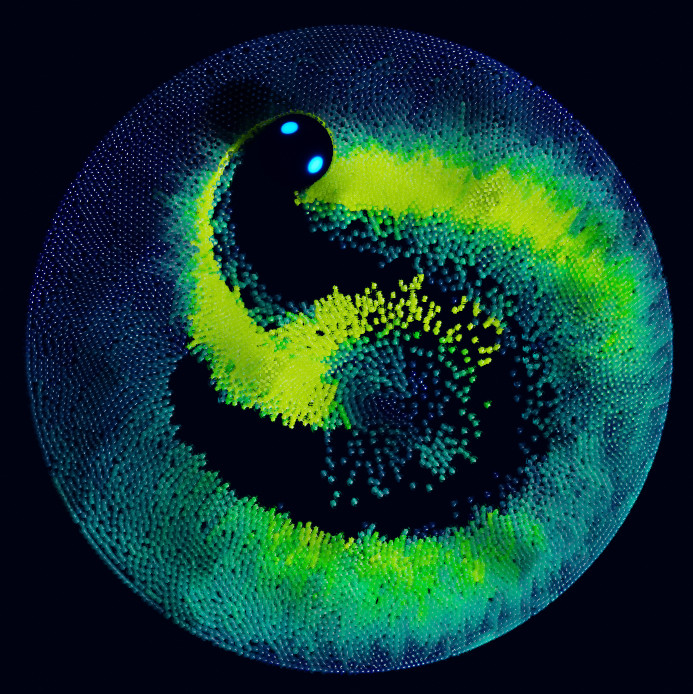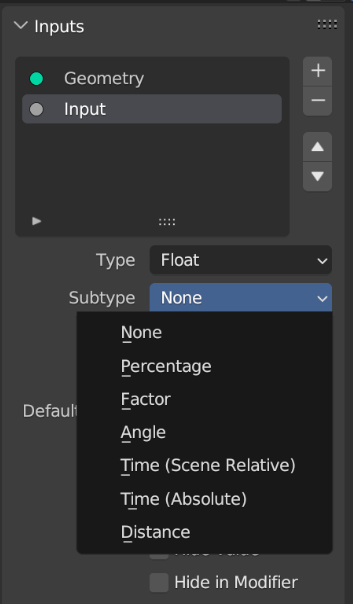Nodes & Physics¶
Geometry Nodes¶
Simulation Nodes¶
- Geometry nodes now has support for simulations
(0de54b84c6).
- Simulations are created with the new Simulation Input and Simulation Output nodes.
- On the first frame, the inputs of the Simulation Input node are evaluated. In later frames the inputs aren't evaluated anymore. On later frames, the node outputs the result of the previous frame.
- The Simulation Output node saves the state for the next frame.
- The simulation's results can be cached or baked to storage, which is
controlled with a new panel in the physics tab in the property
editor and visualized in the timeline.
- All baked data is stored on disk in a folder next to the .blend file.
- The timeline indicates which frames are currently cached, baked or cached but invalidated by user-changes.
- Simulation Nodes and Index of Nearest demo file.

General¶
- A new Index of Nearest node gives index of the closest "non-self" element (15f9e42c4f, d8f4387ac9, 4346314351).
- The legacy read-only "normal" attribute has been removed from the spreadsheet (300c673a64).
- Confusing units have been removed on some inputs to the String to Curves node (4f08eeae9c).
Performance¶
- Blender and geometry nodes make use of a new system to avoid copying
large data chunks, called "implicit sharing"
(7eee378ecc,
dcb3b1c1f9).
- Generally copying geometry to change part of it is much faster, and overal memory usage can be significantly better as well (at least 25% in simple situations).
- Avoiding copies when converting geometry types can make the Instance on Points, Instances to Points, Points to Vertices and Mesh to Points nodes at least 10x faster (e45ed69349).
- Copies can also be skipped when duplicating attributes with the Store Named Attribute and Capture Attribute nodes (b54398c16c).
- Blender now caches loose edges and loose vertices for meshes, making
drawing large meshes in the viewport and other operations faster after
some node setups.
- The Subdivision Surface node tags meshes with no loose edges/vertices (54072154c5).
- Primitive nodes, the Realize Instances node, and the Curve to Mesh node now use precomputed this data too, saving hundreds of milliseconds for large setups (8e967cfeaf, 00bb30c0e9, 63689e4756).
- The mesh bounding box is pre-calculated for primitive nodes, saving
time calculating it later
(a1f52a02a8).
- Recomputing bounds can be skipped after translating a mesh (59c0e19db2)
- Drawing curves selection data in edit mode is up to 3.8x faster (70d854538b).
- Improvements to the Mesh to Curve node improved FPS in a test by 10% (98ccee78fe).
- The Curve to Mesh node is a few milliseconds faster in a test with 1 million curves (52eced3eef).
Node Editor¶
- A shortcut to the Online Manual is now included in the node context menu (e95ba8a70e).
- A new dropdown allows select group socket subtypes (e7f395dd20).
- Link drag search can now move data-block default values when creating group inputs and the Image node (9726e4a0ad).
- Link drag search can copy values of basic socket types like vectors as well (71e4f48180).
